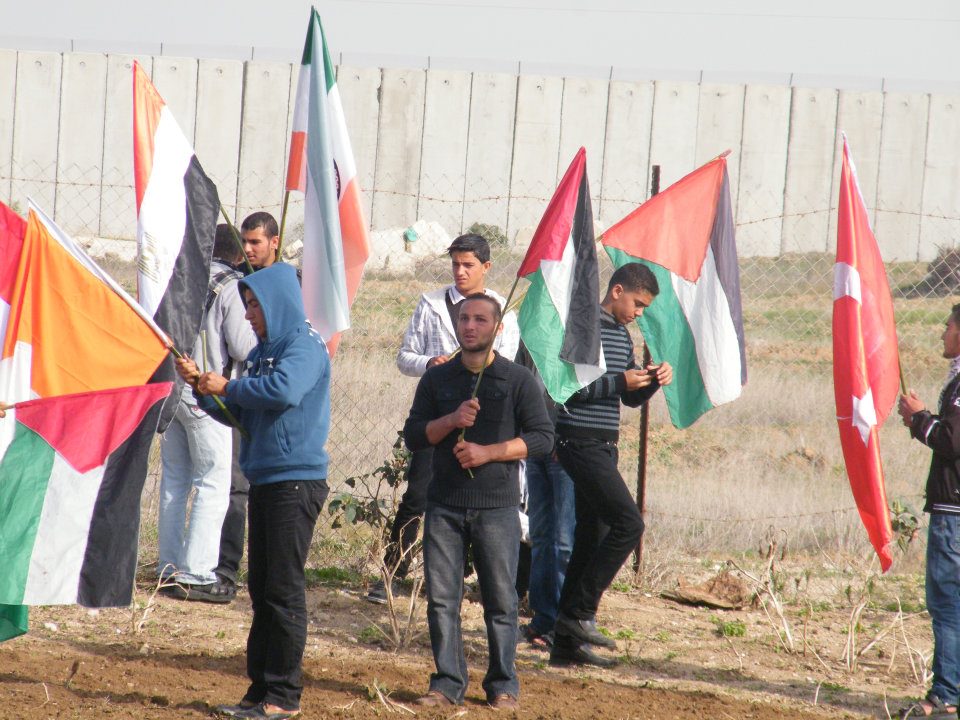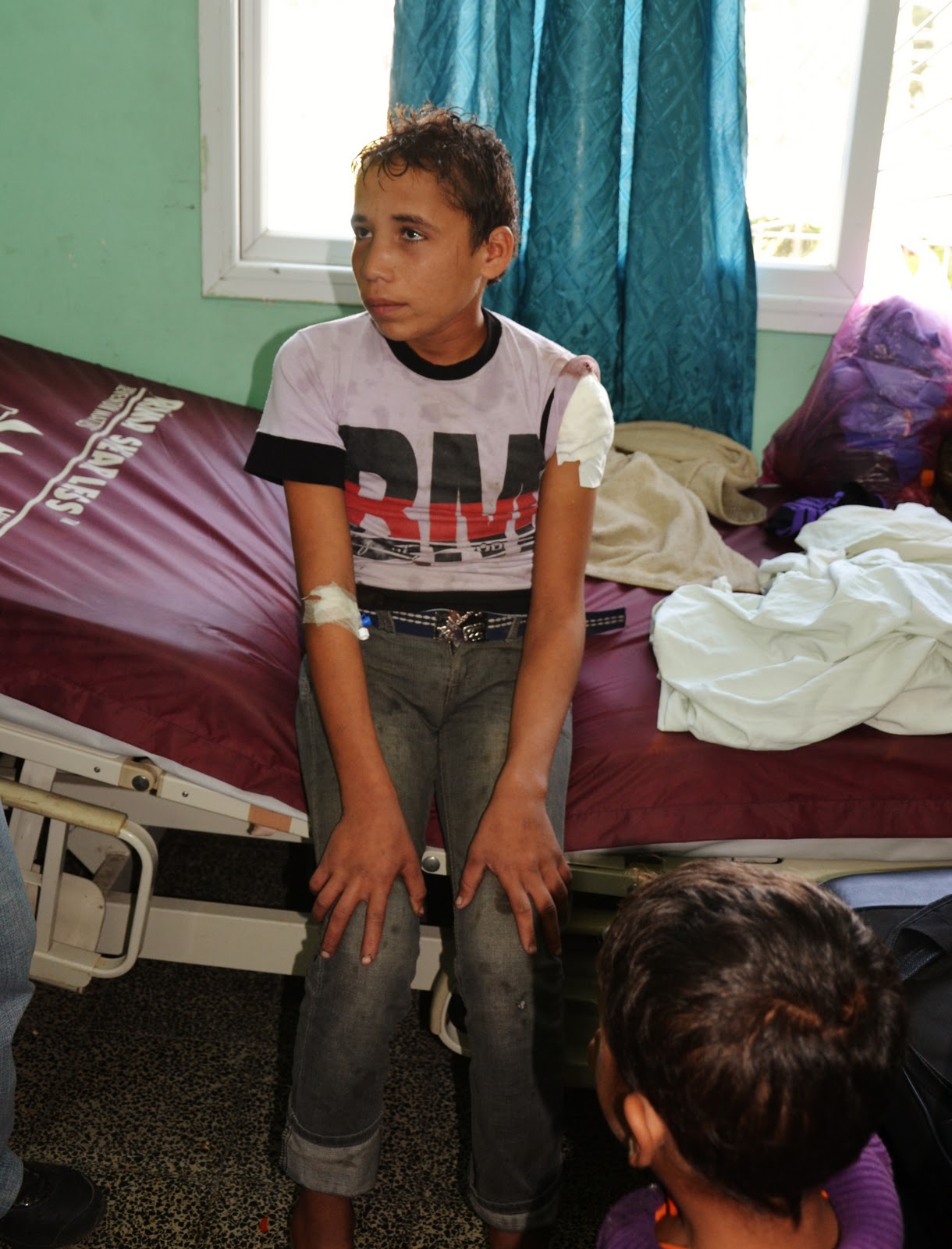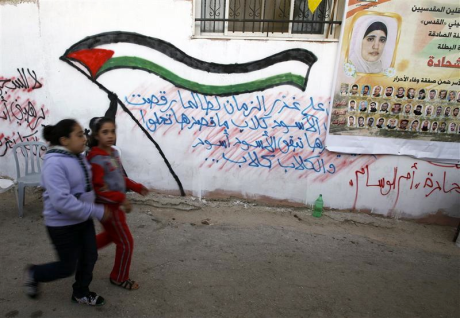Tag: Buffer Zone
-
Planting the seeds of resistance and steadfastness in the no go zone
by Nathan Stuckey 13 December 2011 We set off from in front of the Beit Hanoun Agricultural College under the flags of half a dozen countries, but listening to the music of Palestine. Every Tuesday, for three years, we set off from here into the no go zone, that three hundred meter strip of death…
-
Nedal, 14 years old, collected metal to support his family – they shot him from behind
by Rosa Schiano 13 December 2011 | il blog di Oliva This morning at the Eretz border in Beit Hanoun, Israeli soldiers shot a 14-year-old boy, Nedal Khaleel Hamdan. We went to the hospital to meet him. We found him sitting on the bed with his left shoulder bandaged, surrounded by his family. Nedal was collecting…
-
New report documents children under fire in Gaza
13 December 2011 | AlertNet Twenty-eight cases of children being shot at by the border fence between Israel and the Gaza strip whilst gathering building materials like gravel, or working by the fence, have been documented by Defence for Children International in their latest report ‘Children of Gravel’. The shootings reportedly took place between March…



